What is your contact information?
Contact me at:
What are the criteria for Yarn Database?
Types of Sites Listed
- Knitting pattern designers (including loom knitting)
- Crochet pattern designers (including Tunisian crochet)
- Yarn producers, dyers and spinners
- Spinning fiber producers and dyers
- Fleece sellers
- Tech editors
- Accessory makers and sellers
Requirements
- Makers and their fans can fill out the forms for Designers, Dyers, and Accessory Shops. Tech Editors must fill out their own listings.
- Pattern designers must have patterns available off Ravelry. Selling patterns on Ravelry, in addition to another location, is fine.
- Any links to Ravelry on designer, yarn or fiber sites (including in blogs, pattern roundups, inspiration galleries and kit listings) must be marked as going to Ravelry. Surprise links are not permitted. Liz Corke has written an excellent explanation of why this is important.
- Clearly marked: “Find it on Ravelry.”
- Clearly marked: “Find it at https://www.ravelry.com/patternname/etc.”
- Marked: “This pattern is available through my shop on Ravelry.”
- Surprise link: “Buy my pattern here.”
- Surprise link: “This yarn looks great with patterns like the Almond Paste Mitts.”
How to Create a Listing
- Visit the Get a Listing page for the appropriate form for each type of business. Some of the forms are long. Just fill out what you know.
- If you are the maker, you can include a logo in the submission and email photos for up to four items you’d like to feature to NancyM@YarnDatabase.com.
- You can also contact me on Twitter, Instagram, mastodon.social and bsky.social.
How does the site work?
- Tables — The Designers, Yarn, Fiber, Tech Editors and Accessories pages have tables that are essentially spreadsheets that you can search and filter for results. Makers’ names within the tables link to a separate page about that maker with additional information. There is also an A-Z listing option on each spreadsheet page. In the interest of simplicity, I listed only certain information from makers’ bios in the tables. The full listings contain more information. Let me know if you think different information would be more useful in the tables.
- Filters — All dropdown filters on the Designers, Yarn and Fiber pages are optional. If you don’t select a particular filter, your results will include all listings in that category. If you think different filters would be more useful, let me know.
- Search box — The search box next to the dropdown filters will search the description field in a maker’s bio. You can search for something, then sort the columns or add filters to narrow your results. The search box can be used to narrow down makers by US state, for example.
- Page refreshes — Please be aware that each filter may refresh the table. The effect is gentle and may be unnoticeable, but if page refreshes are disruptive for you, try the A-Z listings pages linked at the top of each category (Yarn, Fiber, Designers).
- Site search — Instead of using the tables, you can use the search feature at the very top right of each page. It’s great with makers’ names, not as great with features.
- Saving your Favorites — The search result tables easily copy and paste into a spreadsheet on your computer, somewhat less easily on a phone. You can also register and create a Favorites list. Find your list at the Favorites link at the top of every page. Add a Favorite by clicking the “Add” button its listing. Remove a favorite by clicking the “Yes!” button in its listing.
- Designer, Yarn and Fiber entries — Each maker’s page contains a blurb about the maker and their URL. Below that are bulleted attributes of that maker’s artistry. These bulleted links do not take you to the maker’s website; they take you to a list of all the makers on the site who have that attribute. For example, clicking on “Gradient” will display a list of all dyers who sell gradient yarn.
What do the terms mean?
- Accessibility — The Accessible Patterns Index defines several features of an accessible pattern: “At a minimum patterns should be written in large print 22 to 24 point font, all black sans serif font. No italics. All directions fully written out. If a pattern has a chart the pattern can be made without use of the chart. Many patterns have also been edited to work with screen readers. They have fewer abbreviations and have been tested on a screen reader(s). All patterns are in PDF files. These files should be easier to use with screen readers because they have very minimal formatting and are specially designed for the blind and print challenged user.”
- Dye to Order — Dyer will create special orders of established colorways, or dyer creates all colorways as they are ordered. This site doesn’t track dyers who create custom colorways, though some of the makers listed do.
- Family Farm – If ownership is listed as a family farm, it means the business sells products created from its own flock. Family farm listings are not required to sell exclusively from their own flocks.
- Surprise links (specifically surprise links to Ravelry) — Links whose destination is unclear. Yarn Database entries are screened to the best of my ability to make sure that all links to Ravelry on those sites are marked as such, so that no one ends up on Ravelry by surprise. See the Requirements section near the top of this page for examples of surprise links.
